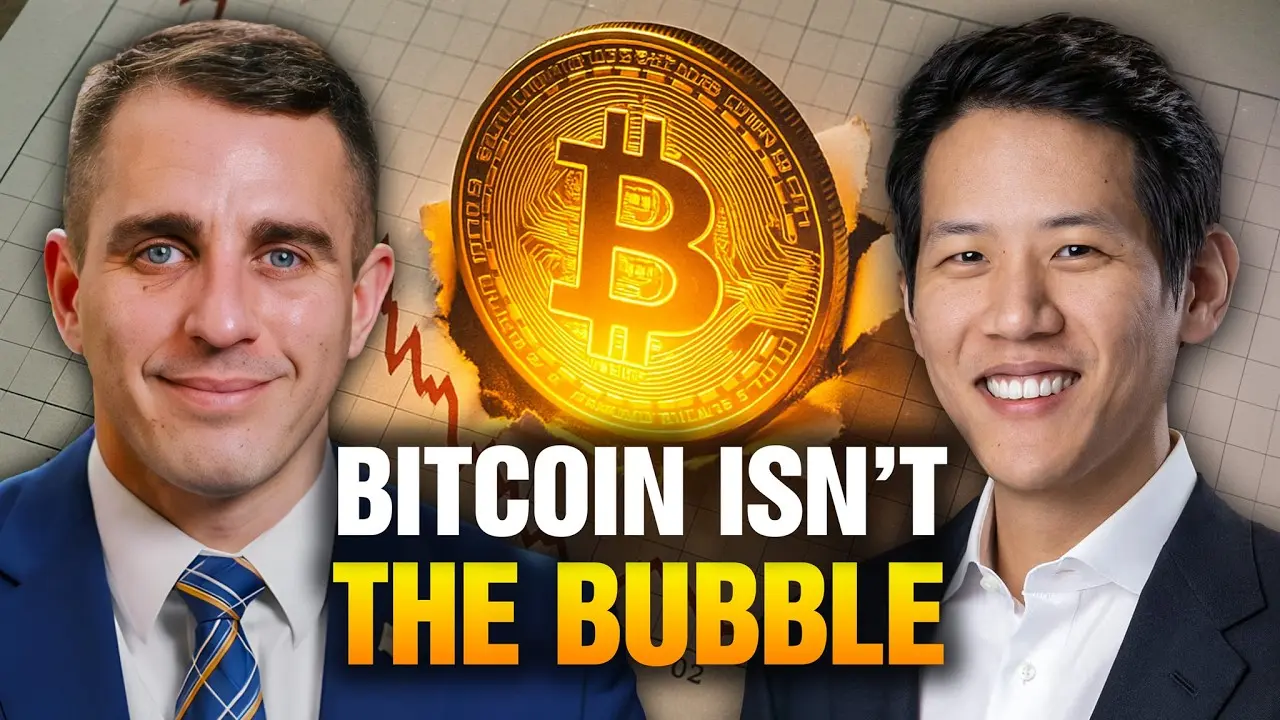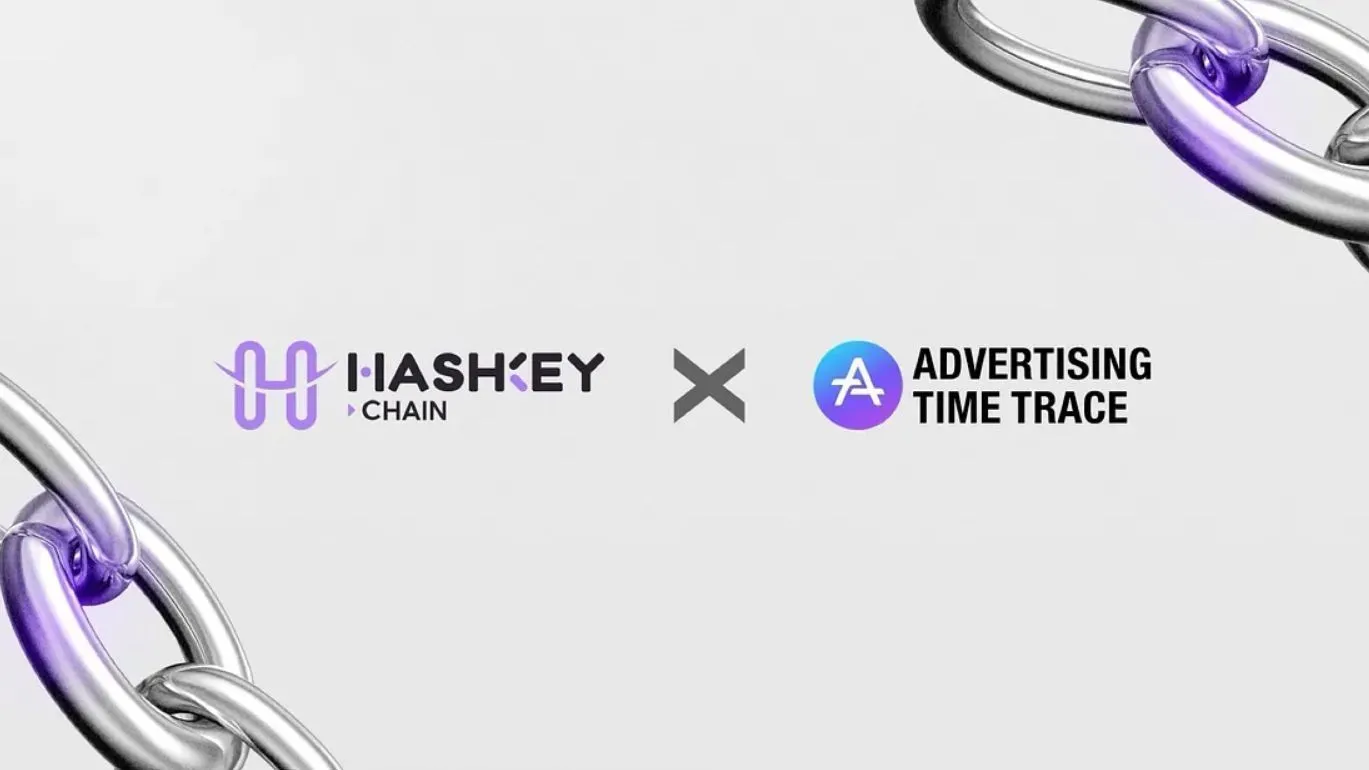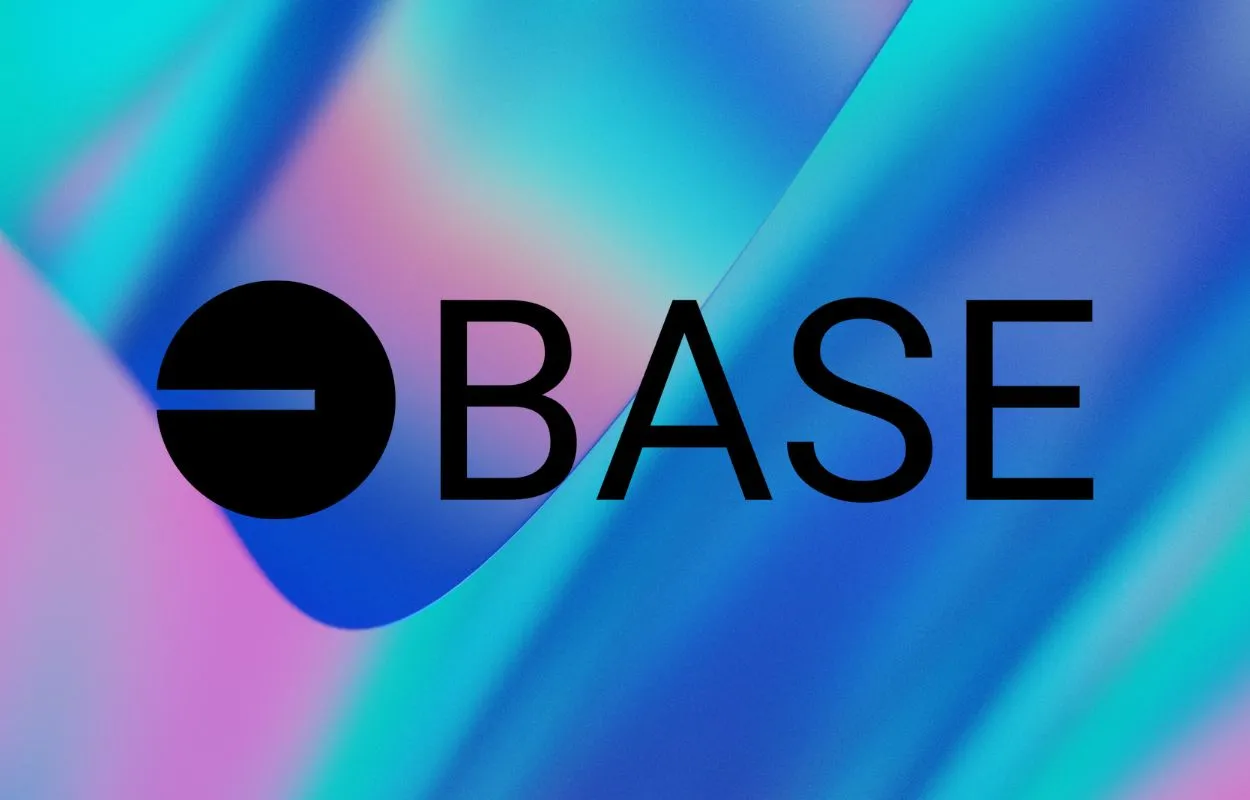
Original text: Anthony Pompliano, American entrepreneur, co-founder of Morgan Creek
Translation & Compilation: Yuliya, PANews
In the past three months, every time Bitcoin's price has pulled back, it has quickly been pushed higher by buying pressure. Now, Bitcoin's price has returned above $112,000, with fluctuations of thousands of dollars occurring within just a few days. This strong buying signal indicates a new trend of institutional and retail funds entering the market. In this episode, Morgan Creek co-founder Anthony Pompliano invited Jeff Park, Chief Investment Officer and Partner at ProCap BTC and Head of Bitwise Alpha Strategy, to discuss "why Bitcoin is not a bubble, but the needle that pops the bubble," the rotation of funds between gold and Bitcoin, the trend of Bitcoin whales injecting spot assets into ETFs, and the significance of Coinbase's acquisition of Echo for institutional and retail investors.
Bitcoin is not a bubble, but the needle that pops the bubble
Host: Jeff, you once tweeted a very striking statement: "Bitcoin is not a bubble, but a needle." Can you elaborate on what this means?
Jeff Park: Many people believe Bitcoin is a bubble, especially towards the end of a four-year cycle, and they tend to be more cautious in their asset allocation. However, this view overlooks the fundamental logic. Bitcoin cannot be a bubble because it is, in fact, the "needle" that pops the current bubble based on fiat currency.
The global economy operates within a fiat system based on credit expansion and inflation, which is the real bubble. Bitcoin is dismantling this structure and redefining the concept of "money"—it is a permissionless, freely flowing asset that changes the velocity of money. The existence of Bitcoin prompts us to rethink what "store of value" should be.
Host: Some might argue that gold is the "needle" because it has long been seen as the foundation of the monetary system. What are your thoughts?**
Jeff Park: Gold does play a supporting role in the fiat system, but it is essentially the "air" in the bubble— the entire fiat economy is built on gold as a store of value. However, gold is not a "useful network"; it is a passive store of value. Bitcoin, on the other hand, is an active, programmable monetary network that can redefine the relationship between liquidity and credit.
In the traditional financial system, mechanisms like "circuit breakers" or "trading limits" exist because too rapid a flow of money can disrupt the credit system—credit relies on the relative stillness of money. But Bitcoin dissolves this stillness; it represents "money in motion," with no queues, no lock-up periods, and no artificial delays. This characteristic makes Bitcoin truly the "needle" that pops the old system's bubble.
Pullbacks will be milder; the "four-year cycle" is history
Host: Some believe Bitcoin may still experience a 50% or greater pullback. What do you think? Can we expect milder fluctuations in this cycle?**
Jeff Park: I think this could be the worst-performing bull market in Bitcoin's history, but at the same time, we should expect the market's downside to be relatively limited, mainly due to strong institutional support. Bitcoin ETFs are an unprecedented new capital tool, and we cannot underestimate the importance of this institutional "bottom support."
For example, retirement funds, IRA accounts, and pension funds can now directly allocate Bitcoin within a compliant framework—this is unprecedented. Additionally, many institutions and retail investors will set up automatic buy orders, such as "buy when Bitcoin drops to $70,000 or $80,000." This structural buying pressure did not exist before the ETF launch. Thus, the market structure has changed.
That said, I still believe the market will experience pullbacks. After all, all commodities will have pullbacks; this is a natural phenomenon that occurs under supply and demand dynamics. Whether demand is strong or sellers outnumber buyers, Bitcoin's uniqueness lies in the fact that we can be certain no new supply will suddenly appear. The circulating supply in the market mainly comes from secondary market transactions, and the growth rate of this supply is far below historical levels, which is also part of the reason I believe the "four-year cycle" theory should be discarded.
Historically, Bitcoin's issuance has had a significant impact on the market, but over time, the issuance has significantly decreased, and block rewards have been greatly reduced, while the total number of buyers entering the market continues to grow. This change in supply and demand structure has broken the old cycle.
Host: So, you mean that in the past, the block rewards were large, but the pool of buyers was small, and now the market faces a dual effect: declining block rewards and an expanding pool of buyers, creating sustained buying pressure for the asset?**
Jeff Park: Absolutely correct; it is a dual effect. In the early supply phase of Bitcoin, miners had to maintain their mining operations through capital expenditure, which led to some organic selling pressure in the market. This selling pressure mainly came from well-capitalized institutional miners who had to sell Bitcoin to repay debts or fund capital expenditures for the next five years. This selling behavior was usually unrelated to price, as its main purpose was to obtain cash, but this selling pressure was detrimental to the market and investors. Therefore, for a rational cryptocurrency investor, it makes perfect sense to exit before miners act.
However, this selling pressure has significantly weakened now. New buyers entering the market are more long-term holders rather than short-term traders, which has significantly eased market volatility.
Host: Besides the reduced magnitude of declines, it seems that the duration of pullbacks is also shortening. Past bear markets could last a year and a half or even two years, while current pullbacks often last only a few weeks. Do you think this is also related to institutional buying?**
Jeff Park: I believe so. There are now many investors in the market waiting for the right entry point. They understand Bitcoin's long-term value but think the current price is too high and prefer to "wait a bit longer." However, they often miss the entry opportunities. In recent months, every pullback has been quickly bought up, with prices rebounding by thousands of dollars within just a few days. This indicates that there is sustained buying momentum in the market, and this momentum will further strengthen as prices rise.
Bitcoin is a typical momentum asset—when prices rise, more people will FOMO in, creating a self-reinforcing upward cycle. More importantly, these investors often do not sell during declines, leading to a gradual increase in the average holding cost across the entire network, thus establishing higher price floors.
The rotation relationship between gold and Bitcoin
Host: Gold experienced an epic surge in 2025, rising about 60%, almost reaching a frenzied state. Perhaps it is now time to rotate from gold to Bitcoin. We know there is a certain pattern between gold and Bitcoin—typically, Bitcoin tends to follow gold's rise about 100 days later. Additionally, some have mentioned the "fund chasing" phenomenon at the end of the year, and Bitcoin has historically performed well in Q4. All signs seem to indicate that although Bitcoin's gains this year have not met expectations, this may not be a moment to overlook. Do you agree?**
Jeff Park: Yes, I completely agree. In fact, this echoes our earlier point—gold is also a kind of "altcoin" to Bitcoin. Recently, gold dropped about 4%, while Bitcoin showed relative strength in this environment. Although this is just one day's performance and shouldn't be overinterpreted, it is enough to indicate that market momentum rotation is occurring. Gold's previous rise was almost entirely driven by momentum, with its RSI indicator remaining above 70 for two consecutive months. I have never seen any asset maintain such a high level of overbought status.
At the same time, trading volume in the gold options market surged last week—setting a record for the highest volume of call options, indicating that the market is indeed in a frenzied stage. However, momentum always has an end; once a correction occurs, funds often seek the next asset with upward potential. Bitcoin lags behind gold in various liquidity indicators, making it perfectly positioned for this "catch-up" space. Therefore, from a trading logic perspective, Bitcoin is the next most reasonable rotation direction.
At such times, Bitcoin often experiences extremely rapid explosive rallies—perhaps one day we will wake up to find the gap in gains between gold and Bitcoin quickly closed.
Host: I once spoke with Peter Schiff (a well-known gold enthusiast) about gold. He mentioned that gold has risen 60% this year, while Bitcoin has only risen 18% to 20%. I asked him, "Is it possible that Bitcoin will surpass gold by the end of the year?" While no one can be certain, we all know Bitcoin is extremely volatile.
Jeff Park: That's right; Peter himself knows the intensity of this "short-term explosion" best. Although gold has performed strongly in recent years, nearly catching up to or slightly surpassing the Nasdaq's gains since 2008, this performance is actually concentrated in a few time windows. If we look back over a longer period, such as since 2002, gold's annualized return is actually less than 3%.
Trading in these macro "store of value" assets is fundamentally highly dependent on momentum. If gold can "recover lost ground" through a year's explosion after long-term underperformance, then Bitcoin's pace will only be faster—perhaps completing the same magnitude of rebound in a few weeks or even days. Therefore, Peter is not wrong; it's just that Bitcoin is the faster horse.
The reason is simple: Bitcoin is not constrained like physical commodity markets. Gold trading involves storage, logistics, futures position allocation, and many other aspects; whereas Bitcoin is a completely digital, instantly executable market—anyone can click "buy" on Coinbase or other exchanges at any time to participate.
From spot to ETF, the new play for whales
Host: Since we are discussing the logic of gold rotating to Bitcoin, another important phenomenon is the internal rotation within Bitcoin—from spot to ETF structures. This operation was not feasible in the past because ETFs could not conduct "in-kind contributions/redemptions." Now that the rules have changed, can you explain this mechanism and its significance?**
Jeff Park: Of course. To understand "in-kind contributions/redemptions," we need to look back at the development of ETFs and mutual funds. The earliest mutual funds were based on the Investment Company Act of 1940, which allowed investors to collectively hold a basket of assets in a cooperative manner. Whether it was a passive index fund or an actively managed fund, they essentially provided a democratized tool for professional asset management for the public. However, the downside of mutual funds is that they cannot be traded intra-day, have limited price discovery mechanisms, and are not convenient for physical asset contributions/redemptions.
ETFs emerged to solve these problems, but in the early days (especially after 2008), ETF issuers had to apply for "exemptive relief" from regulators, a lengthy process that favored large institutions like BlackRock, making it difficult for smaller issuers to enter the market. It wasn't until 2019 that the "ETF Rule" was introduced, allowing the ETF industry to achieve regulation and standardization, enabling any institution to issue ETFs according to a unified template without additional approval—this spurred the explosion of the ETF market.
However, this rule only applies to funds under the Investment Company Act of 1940 and does not apply to commodity funds under the Securities Act of 1933. Since Bitcoin ETFs fall under the latter, they initially did not have the capability for in-kind contributions and redemptions. It wasn't until July 2025 that this restriction was finally lifted—high-net-worth investors can now contribute their held Bitcoin directly in physical form to the ETF in exchange for ETF shares, avoiding triggering tax conditions.
According to BlackRock, they have absorbed approximately $3 billion from high-net-worth clients into their Bitcoin fund this year through this method.
Host: What are the benefits of doing this? What advantages does the ETF structure have compared to directly holding spot Bitcoin?
Jeff Park: The benefits can be divided into "quantitative" and "qualitative" aspects.
Quantitative Aspect: The ETF structure allows investors to participate in the financial system of traditional capital markets. For example, through an ETF, borrowing and short-selling can be conducted in a regulated environment with lower counterparty risk. Unlike unsecured lending in the crypto market, lending activities within an ETF are secured by central clearing, compliant market makers, and custodians. Therefore, for investors looking to safely earn Bitcoin returns, lending ETF shares to earn interest is safer than lending the spot asset, which is why many crypto hedge funds choose to hold through ETFs rather than spot.
Additionally, ETFs can achieve "cross-margining" with non-crypto assets. For instance, holding Bitcoin on Coinbase cannot be used as collateral to purchase Microsoft or Apple stocks; however, under the ETF structure, custodians can quantify the overall risk and provide financing limits, which is a new liquidity and leverage tool for many long-term holders.
Qualitative Aspect: In the wealth management industry, the compensation of financial advisors is linked to the scale of assets under management. If a client holds a large amount of Bitcoin but it is not within a regulated framework, the advisor cannot include it in their assessment and thus cannot provide corresponding treatment. However, if these Bitcoins exist in ETF form, the client's asset scale will be formally recognized, allowing them to enjoy higher levels of service and credit limits.
Therefore, ETFs not only provide an upgrade in financial tools but also change the visibility of wealth classes.
Host: In other words, putting Bitcoin into an ETF creates significant benefits for traditional financial institutions, but for Bitcoin holders seeking financial services, it indeed serves as a bridge.
Jeff Park: However, everything has its pros and cons. Once Bitcoin is contributed to an ETF, the contributor is no longer an on-chain owner and cannot participate in on-chain economic activities. I believe that having a dual allocation of both Bitcoin and Bitcoin ETFs may be a more balanced choice, as the two are not mutually exclusive. Investors can allocate part of their assets to participate in DeFi on-chain while placing part into ETFs to enjoy traditional services. However, it is undeniable that the ETF redemption process is complex, especially concerning tax basis tracking, and this area still requires more clear guidance.
Host: Another factor that high-net-worth users are concerned about is security. By handing Bitcoin over to an ETF, the shares exist in a securities account, eliminating worries about theft or operational errors; whereas in self-custody on-chain, many still experience increased heart rates during each transfer, often sending test transactions to prevent mistakes. Of course, this "sense of security" comes at a cost—ETFs have management fees, but many believe this "insurance premium" is worth it.
Jeff Park: Just like the recent AWS outage, when MetaMask was temporarily unable to load the mainnet, the fear of "inaccessible assets" reminds people once again: self-custody, while liberating, also comes with risks and uncertainties. With the increase in real-world "wrench attacks" (i.e., violent threats to seize private keys), the custodial security of ETFs has become a psychological stabilizing factor—after all, ETF shares cannot be directly threatened and transferred like private keys.
Coinbase's Ambition: Breaking Down Barriers Between Primary and Secondary Markets
Host: The last topic. Coinbase recently announced a $25 million purchase of Cobie's NFT, followed by a $375 million acquisition of his company Echo. Interestingly, the news of the NFT purchase garnered more attention than the company acquisition. What are your thoughts on this transaction?
Jeff Park: This is a highly symbolic acquisition. Coinbase has once again demonstrated its strategic vision—under the slogan of "promoting economic freedom," it has successfully integrated two opposing forces in the crypto world: one side consists of Bitcoin maximalists who wish to "break away from the system," while the other side is the tech idealists committed to open innovation. This slogan allows both to coexist under the same vision. The addition of Echo further strengthens Coinbase's strategic matrix.
You can place Coinbase in a two-dimensional coordinate system: the horizontal axis represents customer types—one end is retail investors, and the other end is institutions; the vertical axis represents market attributes—from the primary market (value creation) to the secondary market (value circulation). Coinbase is not just an exchange; it is a builder of financial infrastructure, connecting various aspects such as financing, issuance, trading, and liquidity management, achieving a "vertical integration" of the crypto world.
In my view, this is the "holy grail" path to rebuilding the financial system. Imagine a project completing its issuance and financing on Coinbase's primary market, then seamlessly entering the secondary market for circulation on Coinbase. This "point-to-point" integrated structure is the form that the true crypto economy and internet capital markets strive for.
Host: This seems to respond to your repeated dissatisfaction with traditional markets—especially the gap between private financing and public listings.
Jeff Park: Yes, the structure of traditional stock markets has become increasingly inefficient over the past twenty years. Looking back before the 2000s, companies often chose to IPO at an early stage, allowing ordinary investors to participate in growth relatively early. However, in the past 15 years, the rules have completely changed, greatly disadvantaging retail investors.
This change stemmed from two key events: Facebook's Pre-IPO maneuver and the JOBS Act of 2011-2012.
Before Facebook, there was a "500 shareholder limit rule" in the U.S.—once a company's shareholders exceeded 500, it had to go public. However, Facebook wanted to delay its IPO, so it cleverly circumvented the rule by creating SPVs (special purpose vehicles) to package hundreds of investors as a "qualified investor." This practice opened the "Pandora's box," forcing regulators to redefine the boundaries of "crowdfunding."
The JOBS Act was intended to fix systemic flaws and provide more people with opportunities for early investment, but it ended up having side effects. It allowed companies to stay in the private phase longer without needing to go public early. The so-called "crowdfunding platforms" that retail investors could participate in, such as Republic, Wefunder, and SeedInvest, became inferior tracks of passive choices.
Truly high-quality companies do not raise funds on these platforms, leaving retail investors with fewer and lower-quality opportunities. Thus, two parallel markets have formed: one is the "early private market" for the wealthy and institutions, and the other is the "secondary trading market" where retail investors enter much later. This structural divide is, in a sense, a "cancer" of society, as ordinary people cannot invest early and share in the growth dividends.
Host: So you believe that the emergence of crypto is meant to bridge this social divide?
Jeff Park: Yes, the true revolution of crypto lies in the fact that anyone should have the opportunity to participate in both primary and secondary markets simultaneously. The retail financing platform built by Coinbase through Echo, combined with Sonar's on-chain engine, can make this vision a reality. Once this connection is completed, it means that "tokenization" has truly been realized—investors no longer have to face multi-layered intermediary structures or wait for the complex transition of assets from private financing to public markets.
In the current traditional system, when investors hold private equity, they must go through cumbersome processes: share registration, transfer agents, broker reporting, and clearing company confirmations, with any step potentially going wrong. Even more absurdly, sometimes brokers may refuse to accept shares that investors legally hold simply because the risk department deems them "high risk." Investors may hold legitimate assets but are told "the system does not accept them," which goes against the concept of "financial freedom."
What Coinbase aims to do is to open up the entire "pipeline" from primary issuance to secondary circulation, allowing retail and institutional investors to stand on the same starting line. This is not only a significant benefit for the crypto industry but also a structural reconstruction of fairness for the entire economic system and retail investors.
Tokenization: The "Ultimate Weapon" to Eliminate All IPO Barriers
Host: In the blockchain field, the proliferation of wallets has placed all users on a more equitable starting point. Regardless of the amount of funds, identity background, or experience, on-chain wallets provide equal participation opportunities for everyone.
Jeff Park: However, policies like the JOBS Act have never truly lowered IPO costs; instead, they have subjected companies to more legal and administrative barriers. The original intention of "allowing more people to participate early" has been offset by complex procedures and costs.
Tokenization eliminates these barriers.
When ownership can be directly issued, transferred, and traded in the form of on-chain tokens, the entire financing process will become transparent, efficient, and frictionless. What Coinbase is promoting is this "true on-chain equity structure," which is not only a technological innovation but also a systemic turning point.
Of course, this will also reignite discussions about "what constitutes a security"—which is closely related to the past ICO era and the regulatory logic emphasized by Gensler. However, this discussion is healthy because it relates to two core goals: fair participation for retail investors and transparency mechanisms for institutional investors.
Host: This seems to be a form of "market-driven" evolution. While regulation sets limits, the market is finding its own way out. Nowadays, many people complain that the "qualified investor rule" restricts retail investors from entering early investments, but at the same time, they are circumventing this through the crypto market.
免责声明:本文章仅代表作者个人观点,不代表本平台的立场和观点。本文章仅供信息分享,不构成对任何人的任何投资建议。用户与作者之间的任何争议,与本平台无关。如网页中刊载的文章或图片涉及侵权,请提供相关的权利证明和身份证明发送邮件到support@aicoin.com,本平台相关工作人员将会进行核查。




